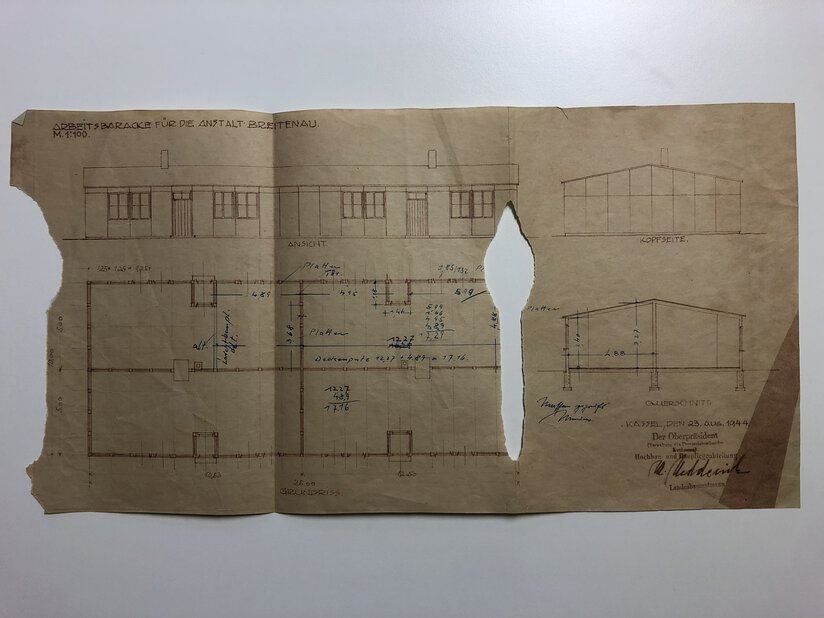Work barrack
You currently find yourself facing the work barrack of 1944. This barrack was called an "Arbeits-Einheits-Massivbaracke" (literal translation: massive barrack for work units) and was built on the site by the Kassel-based company C. Daum. Here, prisoners produced mats in the context of forced labour.
Places where forced labour was practised
Forced labour was a core element of imprisonment in the Breitenau "work education camp" (AEL). Local farms and agricultural enterprises borrowed the prisoners as temporary workers. Labour battalions from Breitenau were deployed in the city of Kassel for clean-up once the Allied air strikes began in 1942. Countless companies also exploited forced workers in their facilities. The locomotive and armaments manufacturer Henschel, which operated several large plants in Kassel, already had more than 6,000 forced workers occupied in production in 1942. In September 1944, 42,044 foreign forced workers were occupied in the arms industry throughout Kassel. They lived in large barrack settlements spread across the city. Several thousand people were housed in the camps.
The Polish forced worker Jan Aksman was also housed in one of these camps. Biography of Jan Aksman:

The Breitenau "Labour Education Camp" (AEL)
The Breitenau AEL most notably stood for the control and punishment of forced workers in the district of Kassel: 80 percent of the Breitenau AEL prisoners were foreign forced workers. These persons had been abducted from countries occupied by Nazi Germany for the purpose of forced labour or lured into the German Reich by means of false promises. Violating the regulations formulated in the racist decrees regarding Polish and Eastern European workers (Polen-Erlasse and Ostarbeiter-Erlasse), for example, meant the threat of imprisonment in an AEL. In addition to foreign forced workers, German Gestapo prisoners were also imprisoned in the Breitenau AEL. Such persons were accused of "violations against the norms of the national community" (Verstöße gegen die Volksgemeinschaft). Among them were German women persecuted for "illicit encounters" with foreign forced workers, as well as Jews. Many of the people were transferred from the Breitenau AEL to the large concentration camps.
Media:
Construction plans of the work barrack of 23 August 1944 (Breitenau Memorial archives)